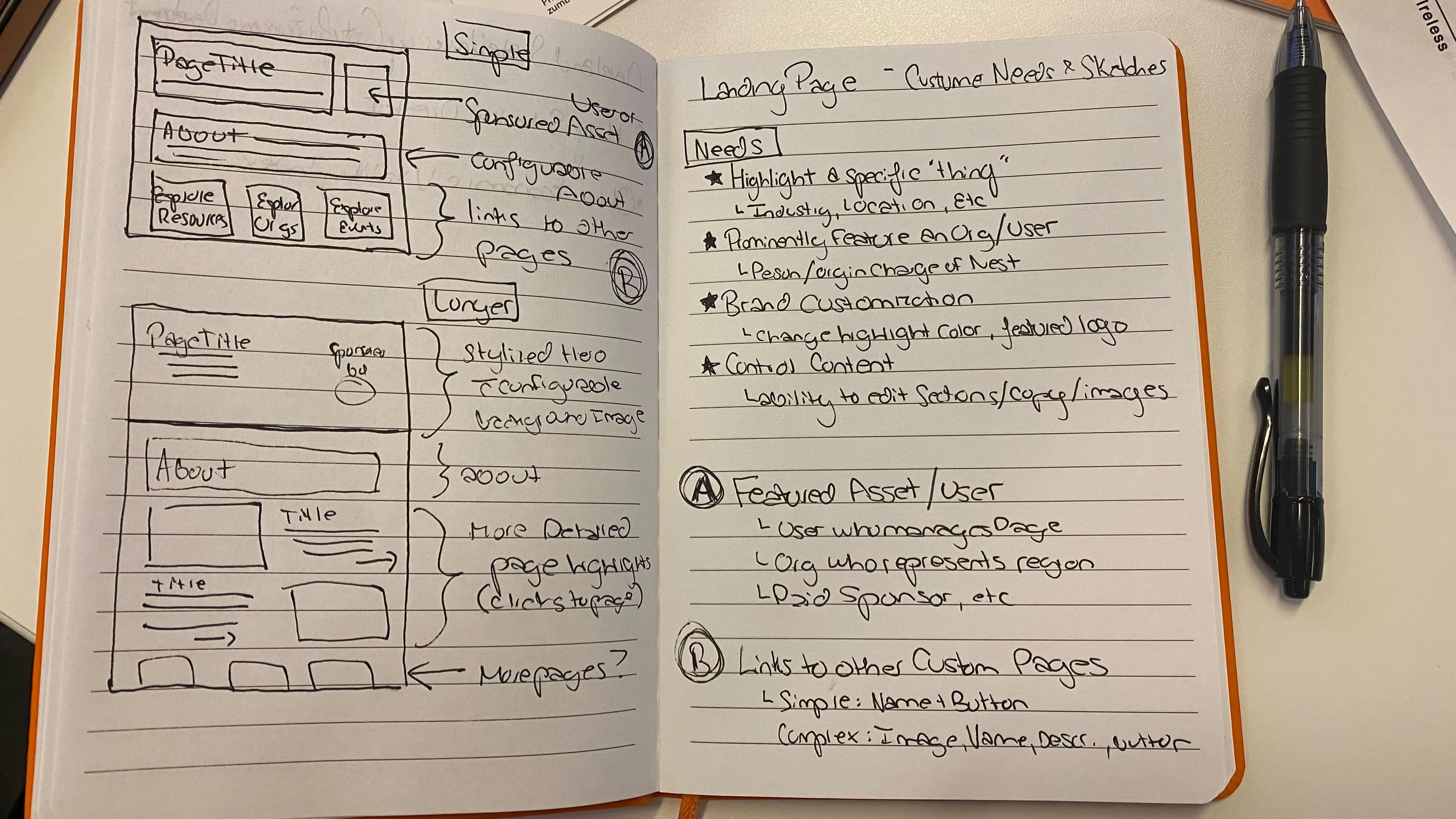
Submaps
Scaling Enterprise Ecosystem Mapping
How we tripled contract values by designing for complex organizational hierarchies and unexpected use cases
- Role
- Product Manager, Design Lead, QA & Front-End Dev
- Timeline:
- 6-8 weeks ◊ Summer - Fall 2023
- Team ◊ EcoMap Technologies
- CEO: Pava LaPere
Product/Design Lead: Denise Nadal
Designers: Hope Chang, Marcus White
Engineer: Jared Gibb - Impact
-
- Contract values increased 3x
- Enabled enterprise customer expansion
- Revenue growth through larger deals and customer expansion
The Opportunity
Summer 2023 brought an exciting challenge: multiple enterprise customers approached us with a common need that our platform couldn't yet address. A statewide university system wanted to showcase resources across their entire network while also providing campus-specific views. Large metropolitan areas spanning multiple counties needed the same capability. The pattern was clear - our customers needed to display complex, nested datasets with flexible hierarchical views.
Strategic Foundation
Our founder recognized this wasn't just a feature request - it was a competitive differentiator that could unlock an entirely new customer segment. The requirements were ambitious: enable organizations to create comprehensive ecosystem maps while supporting granular, context-specific views for different audiences.
The Challenge
- Tight timeline with multiple enterprise deals dependent on delivery
- Complex technical requirements for nested data architecture
- Design consistency risk across multiple team members working in parallel
- Unknown scalability - would this work beyond our initial use cases?
Collaborative Design at Speed
With delivery pressure mounting, we implemented a "divide and conquer" approach that prioritized both speed and consistency.
Design Strategy
- Modular approach - Each designer owned specific feature modules
- Shared design system - Leveraged Figma components for consistency
- Daily synchronization - Regular reviews to align on workflow and style
- Real-time iteration - Immediate feedback loops to prevent divergence
Integrated Planning
As designs were completed, I translated them into detailed engineering tickets, working closely with our development team to identify backend requirements and edge cases. This parallel process kept momentum high while ensuring technical feasibility.
Key Process Innovation: Writing user stories during design helped establish our testing framework before development even began.
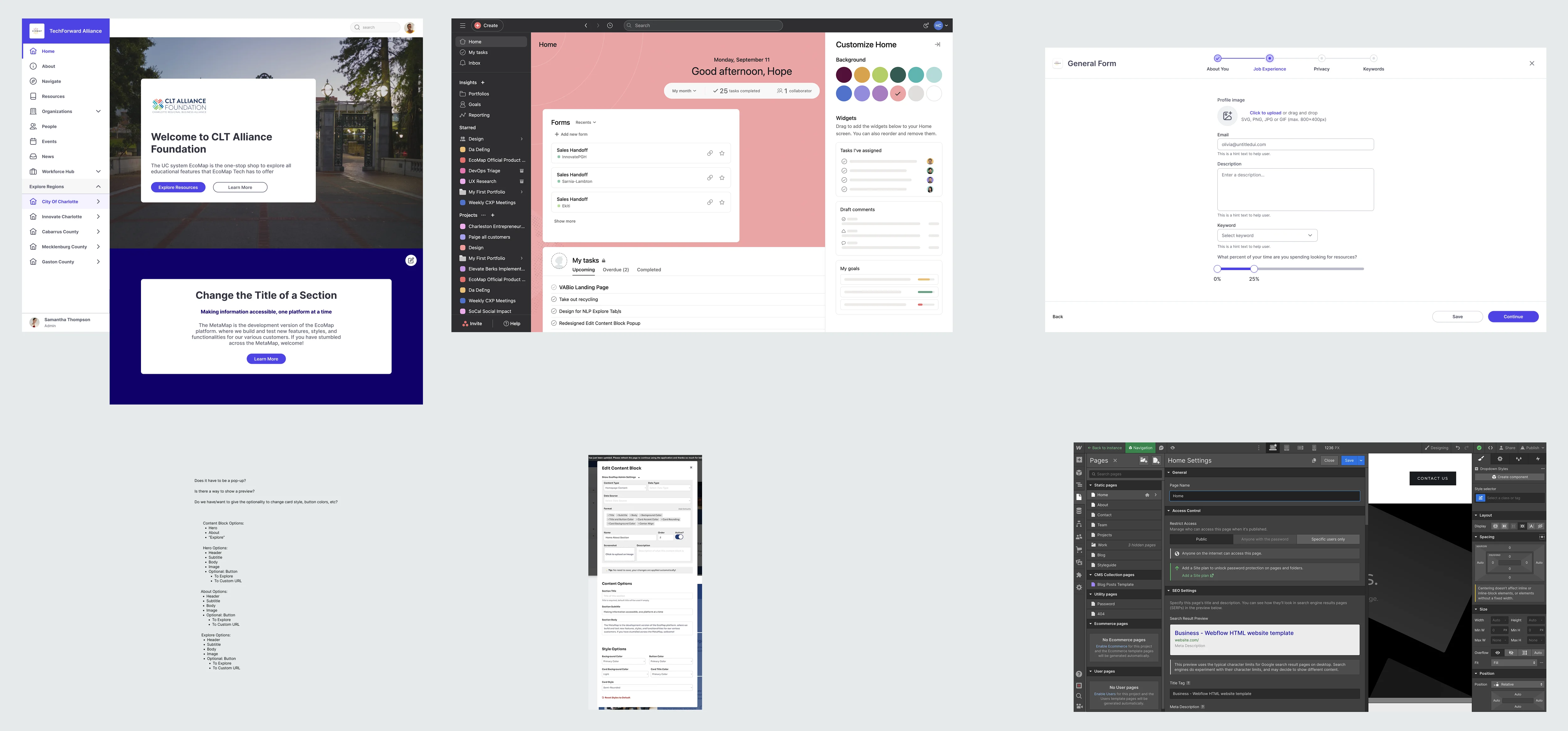
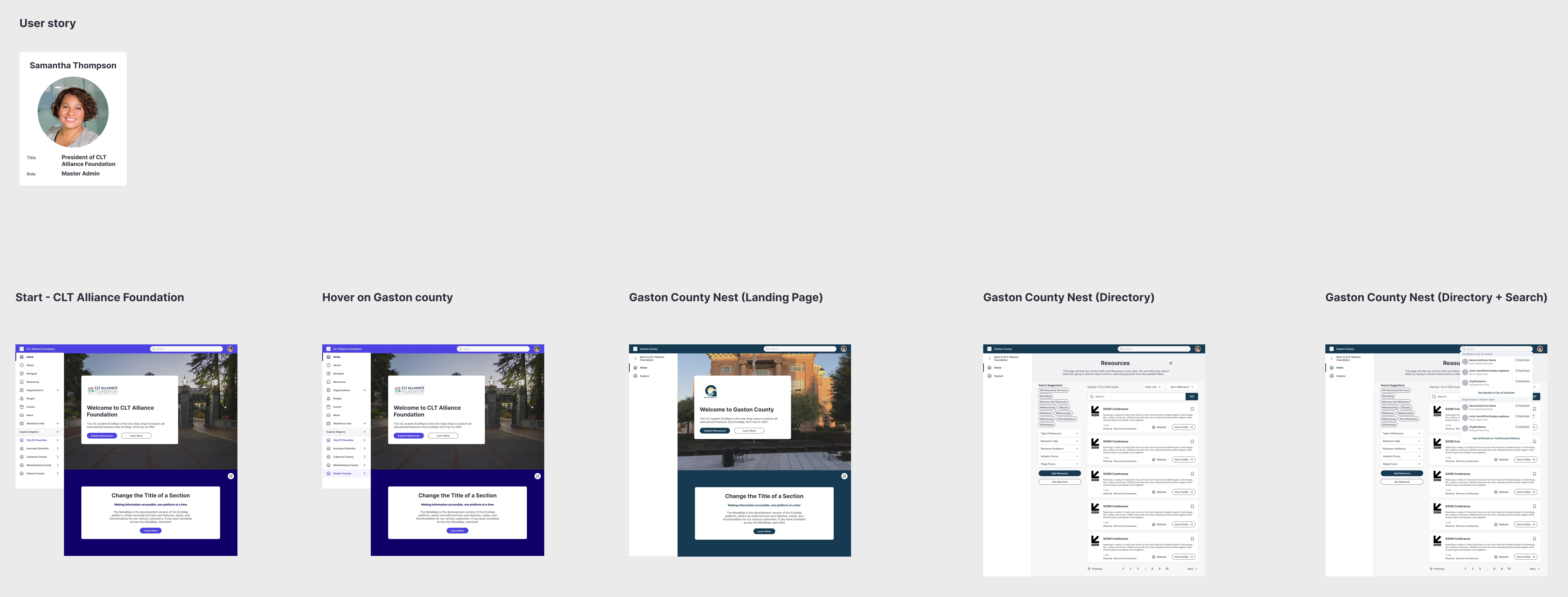
Various screens and workflows designed by our team
Beyond Expectations: The Results
What started as a solution for nested data display evolved into a platform transformation with multiple unexpected benefits.
Quantitative Impact
- Contract values increased 3x - from $20-30K to $60-90K
- Enterprise customer expansion enabled through hierarchical capabilities
- Revenue growth through larger deal sizes and customer expansion
Unexpected Use Cases
1. Customer Expansion Engine
Counties purchasing initial ecosystem maps led to regional and state-level expansions as stakeholder buy-in grew organically.
2. Political Accommodation Tool
The feature solved internal politics challenges by allowing organizations to maintain separate branded submaps while participating in broader collaborative efforts.
3. Brand Independence
Later expansion to support independent domains and branding enabled partnerships between organizations that preferred not to appear directly associated.
Strategic Impact
Market Position
- Competitive differentiation in the ecosystem mapping space
- Enterprise market entry with scalable solutions
- Customer retention through expansion opportunities
Product Evolution
The submaps feature became foundational to our platform strategy, enabling:
- More sophisticated customer hierarchies
- Flexible organizational structures
- Scalable revenue models
Examples of SubMaps for the Charlotte Region platform
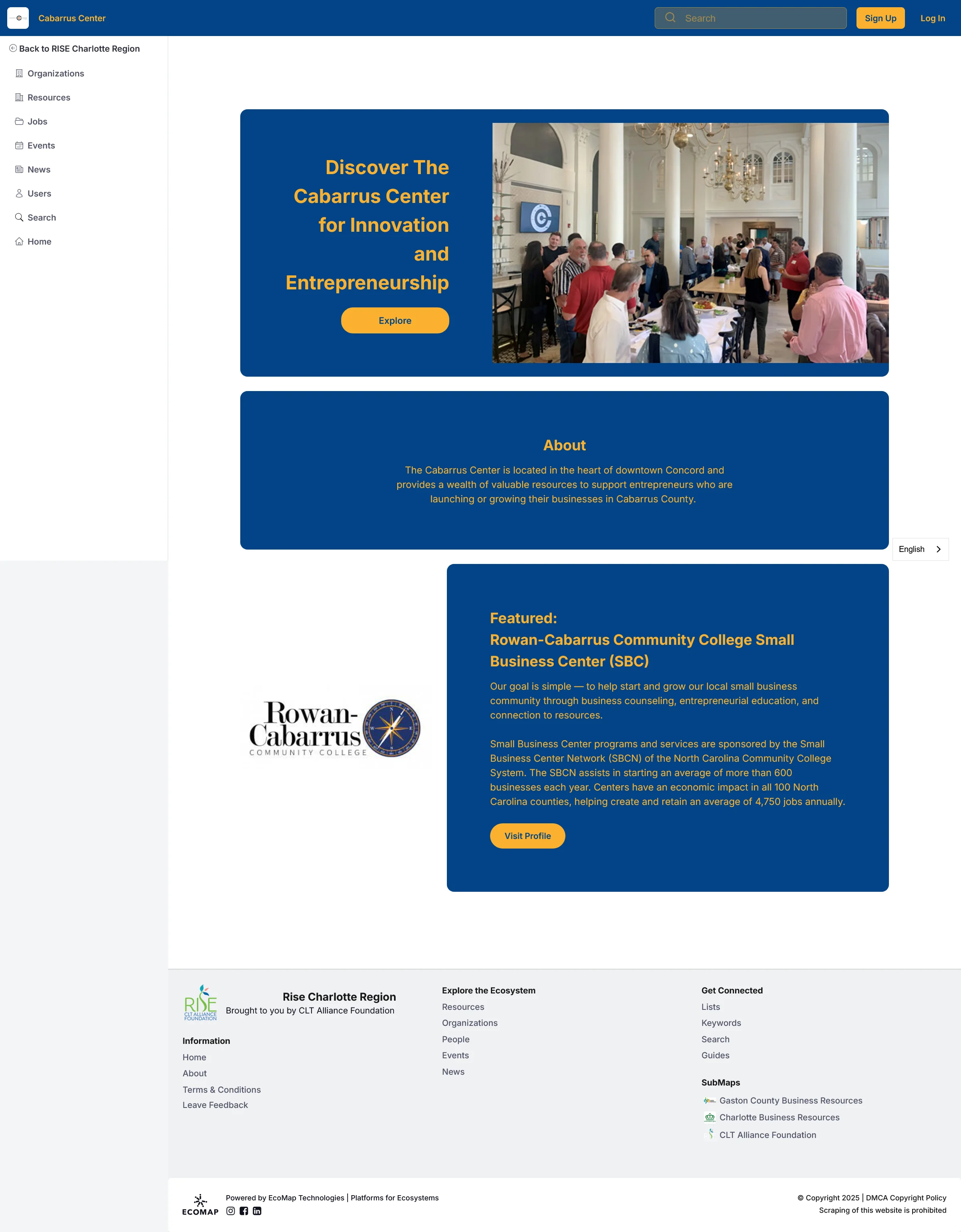
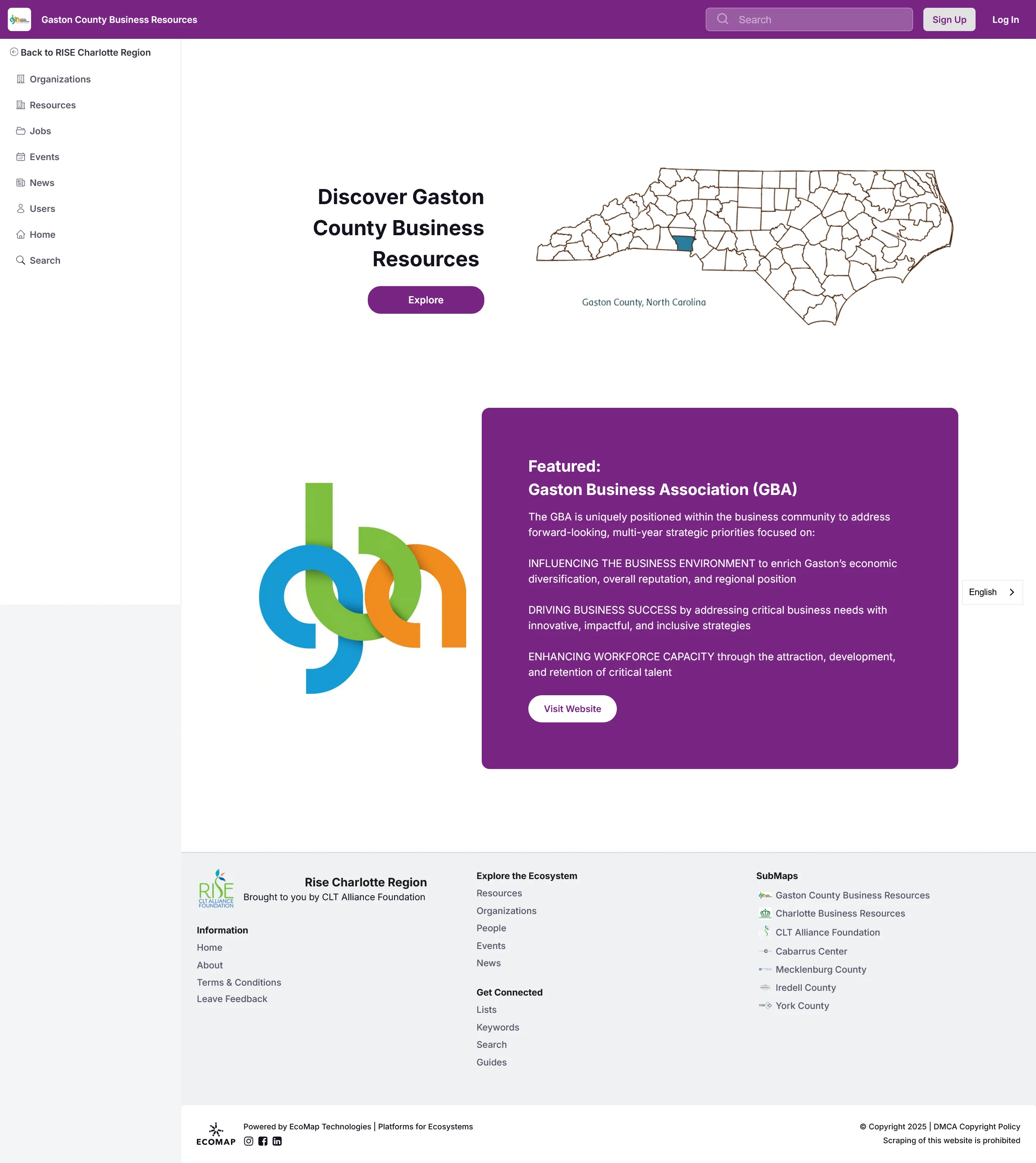
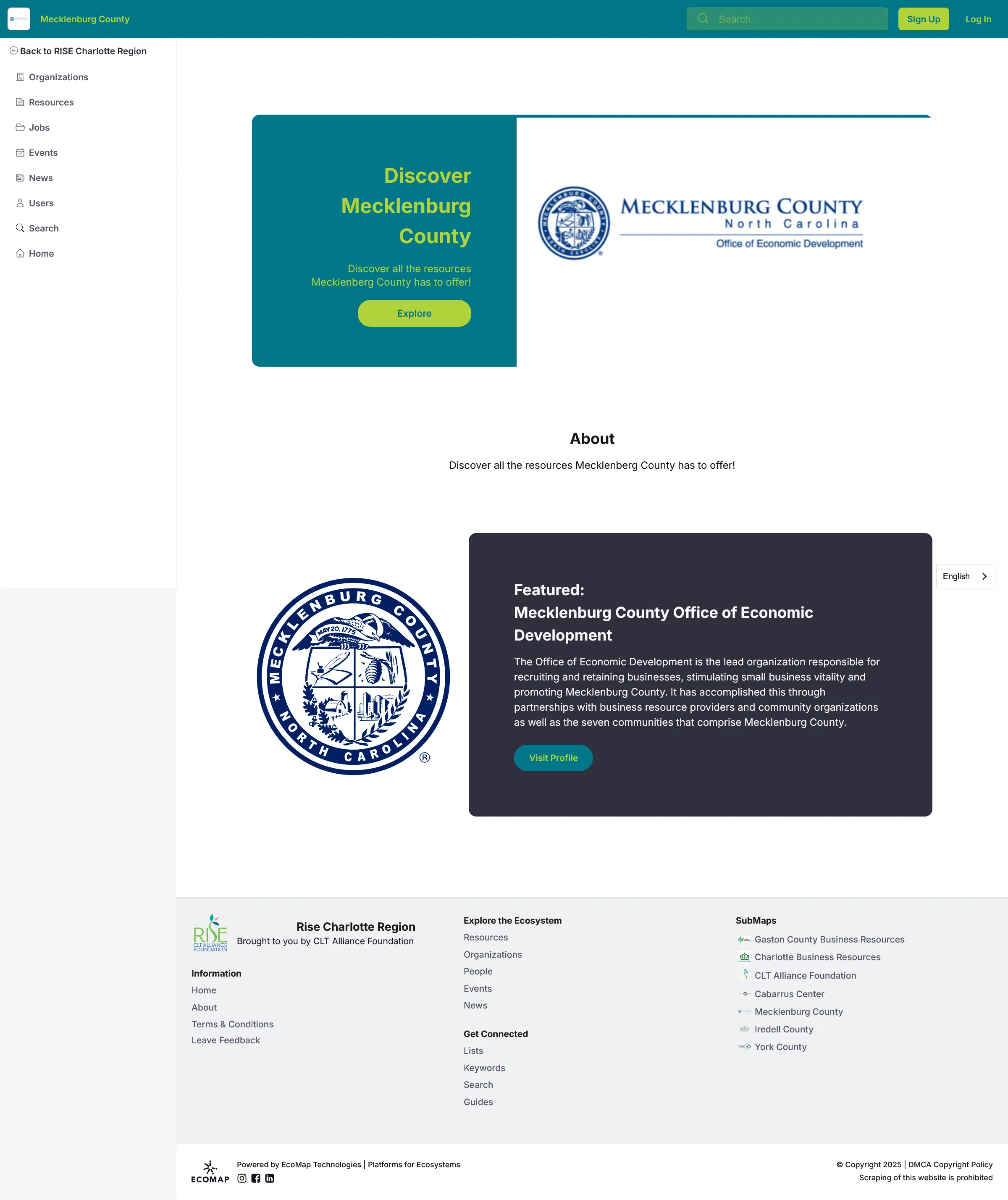
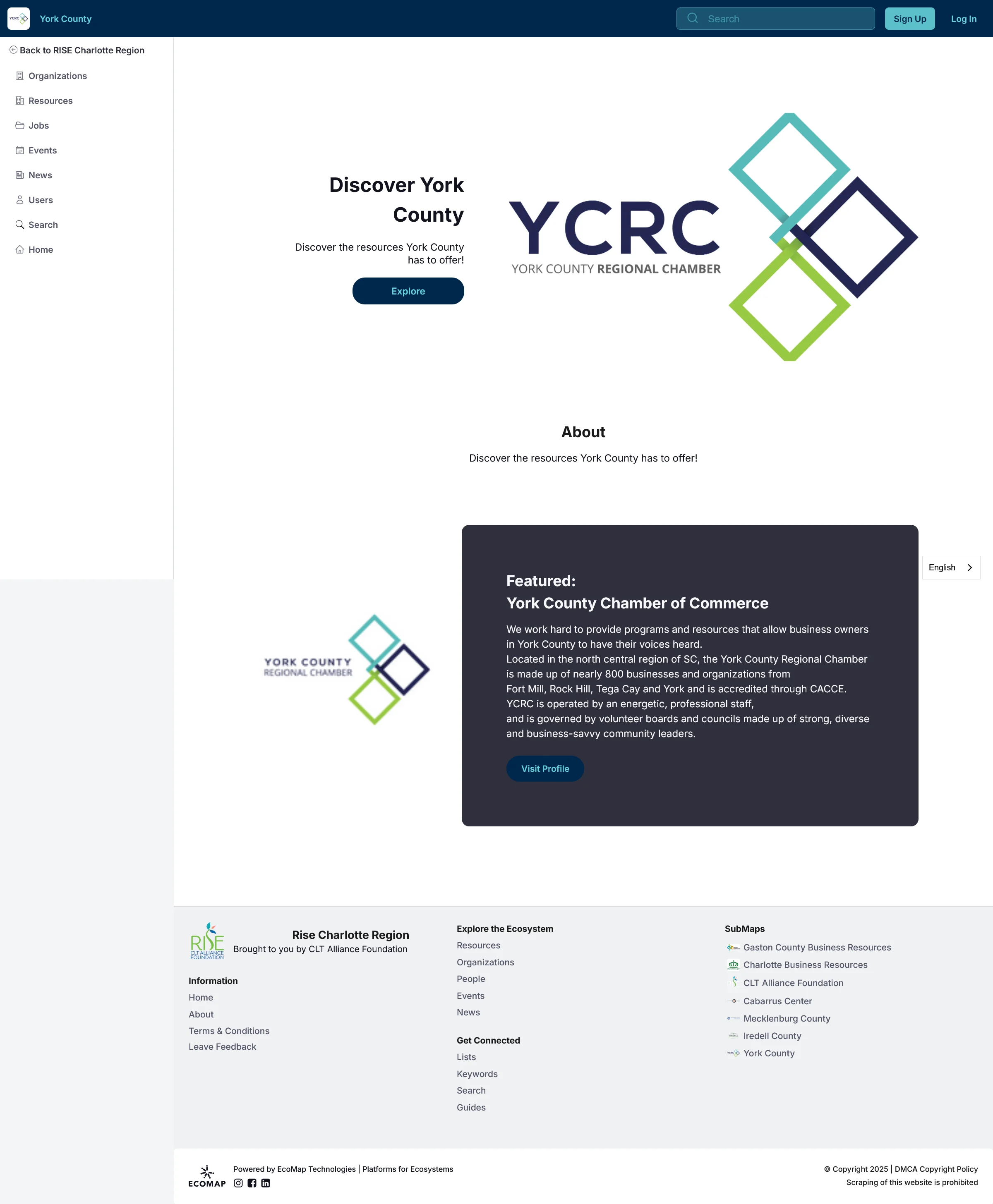
Key Learnings
Design for flexibility, not just requirements. Our concern about over-designing for specific customers was unfounded - the flexible architecture enabled use cases we never anticipated.
Cross-functional collaboration accelerates delivery. The parallel design-development process and daily syncs prevented bottlenecks despite our aggressive timeline.
Product management requires adaptability. Stepping into PM mid-project taught me the importance of maintaining stakeholder relationships while managing technical delivery.
Customer feedback drives innovation. The most valuable features (domain independence, branding separation) emerged from post-launch customer conversations.
Next Steps
The submaps feature has become core to our enterprise strategy, with a major enhancement added in early 2024. We're now applying the collaborative design process to all of our complex feature development.
This project demonstrated how thoughtful design for enterprise needs can unlock new market segments while creating unexpected value for existing customers.
